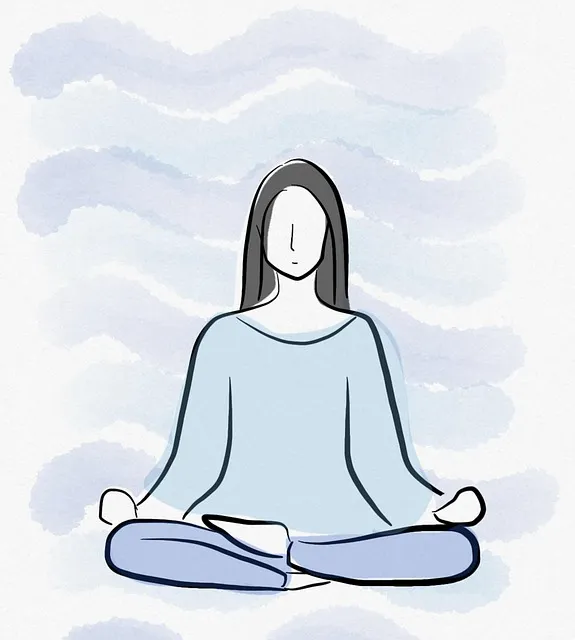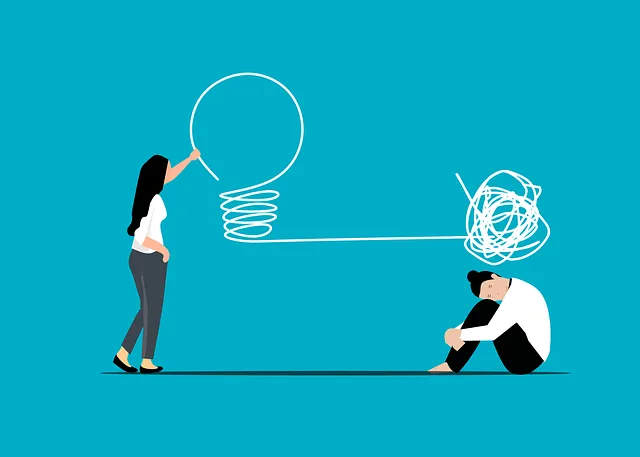Mindfulness meditation, an ancient practice gaining popularity for emotional well-being benefits, especially stress and anxiety reduction, should begin with a quiet space and simple breath awareness. A peaceful practice space, free from distractions, enhances regular mindfulness routines. Techniques like breath focus and body scan cultivate present-moment awareness while metta meditation fosters compassion. Guided meditations in quiet spaces, supported by resources like the Littleton Kaiser Permanente mental health number, offer deeper engagement for mood management, stress reduction, and overall well-being.
Unwind your mind and embrace tranquility with mindfulness meditation, a powerful tool offered by Littleton Kaiser Permanente mental health services. This beginner’s guide delves into the core principles of mindfulness, providing practical steps for those new to meditation. From establishing a serene practice space to mastering various techniques, we equip you with the tools to enhance focus and reduce stress. Additionally, discover strategies to incorporate mindfulness seamlessly into your daily routine, transforming challenges into moments of calm awareness.
- Understanding Mindfulness Meditation: A Beginner's Guide
- Setting Up Your Practice Space: Creating a Calming Environment
- Techniques and Exercises for Effective Meditation
- Integrating Mindfulness into Daily Life: Tips and Strategies
Understanding Mindfulness Meditation: A Beginner's Guide

Mindfulness meditation is a practice that encourages individuals to focus on the present moment, acknowledging and accepting their feelings, thoughts, and bodily sensations without judgment. It’s about cultivating awareness, not silencing your mind. This ancient technique has gained immense popularity due to its proven benefits for emotional well-being promotion techniques. Studies show it can help reduce stress, anxiety, and even alleviate symptoms of burnout prevention strategies for healthcare providers.
For beginners, finding a quiet space free from distractions is key. Set a specific time each day for your practice—whether it’s early morning or before bed—and create a routine. Start with simple breath awareness: notice the sensation of air flowing in and out of your nostrils or the rise and fall of your chest. When thoughts inevitably arise, gently guide your focus back to your breath. Remember, mindfulness meditation is not about reaching a certain level of calm; it’s about fostering a deeper connection with yourself and cultivating presence in every aspect of life, including your healthcare journey at Littleton Kaiser Permanente mental health number.
Setting Up Your Practice Space: Creating a Calming Environment

Setting up your practice space is a crucial step in establishing a regular mindfulness meditation routine. Create a calming environment that invites tranquility and focus. Consider transforming a quiet corner of your home into your dedicated meditation sanctuary. Soft lighting, comfortable seating, and minimal distractions will enhance your experience. Think about incorporating natural elements like plants or a small water feature to foster a sense of peace.
A clutter-free space can significantly contribute to mental wellness and reduce stress. Organize your practice area with items that support your mindfulness journey. This could include a meditation cushion, a quiet clock, or even an inspirational quote to serve as a gentle reminder of your commitment to better mental health, much like the resources offered by Littleton Kaiser Permanente’s mental health number for those seeking guidance in navigating mental illness and stigma reduction efforts.
Techniques and Exercises for Effective Meditation

Mindfulness meditation involves various techniques and exercises designed to help individuals cultivate present-moment awareness. One effective approach is to focus on the breath, observing its natural rhythm without trying to control it. This simple practice helps calm the mind and anchor oneself in the present. Another technique is body scan meditation, where one systematically brings attention to different parts of the body, noticing sensations without judgment.
For those seeking to enhance their practice, compassion cultivation practices like metta meditation can boost confidence and promote a sense of inner peace. By repeating kind phrases to oneself and others, individuals can foster a more compassionate mindset. Moreover, crisis intervention guidance from healthcare professionals, such as the Littleton Kaiser Permanente mental health number, offers valuable support for managing stress and difficult emotions that may arise during meditation practice.
Integrating Mindfulness into Daily Life: Tips and Strategies

Integrating mindfulness into daily life can be a transformative practice, and Littleton Kaiser Permanente mental health professionals are here to guide you. Start by incorporating simple mindfulness exercises into your routine; this could be as easy as taking a few moments each morning or evening to focus on your breath. Be present in everyday activities like eating, walking, or even washing the dishes – pay attention to the sensations, sounds, and smells around you.
For effective mindfulness meditation, consider setting aside dedicated time. Find a quiet space where you can be undisturbed. Use guided meditations available through Littleton Kaiser Permanente’s resources or apps to help you get started. Remember, developing inner strength and cultivating cultural sensitivity in mental healthcare practice are essential components of mindfulness. Regular practice can enhance mood management skills, reducing stress and promoting overall well-being.
Mindfulness meditation is a powerful tool for enhancing mental well-being, as demonstrated by resources available at Littleton Kaiser Permanente mental health services. By consistently practicing techniques outlined in this guide—from creating a peaceful space to integrating mindfulness into daily routines—you can improve focus, reduce stress, and cultivate a deeper sense of calm. Remember, every journey begins with a single step, so start small, be patient, and let your practice grow organically.




